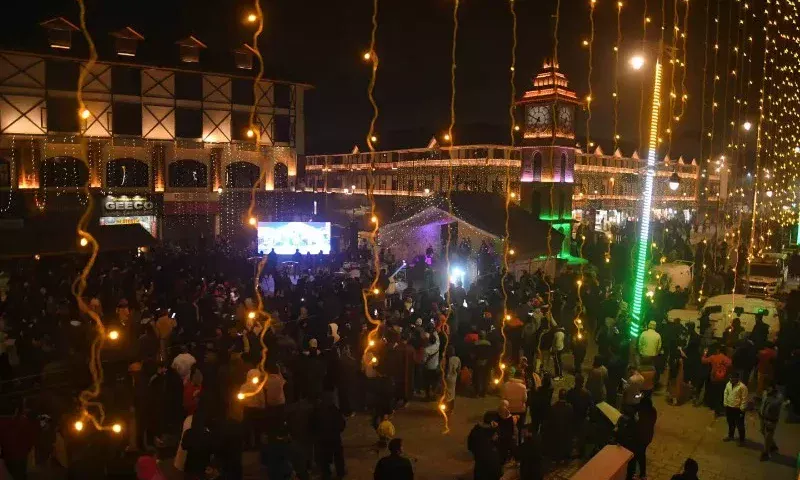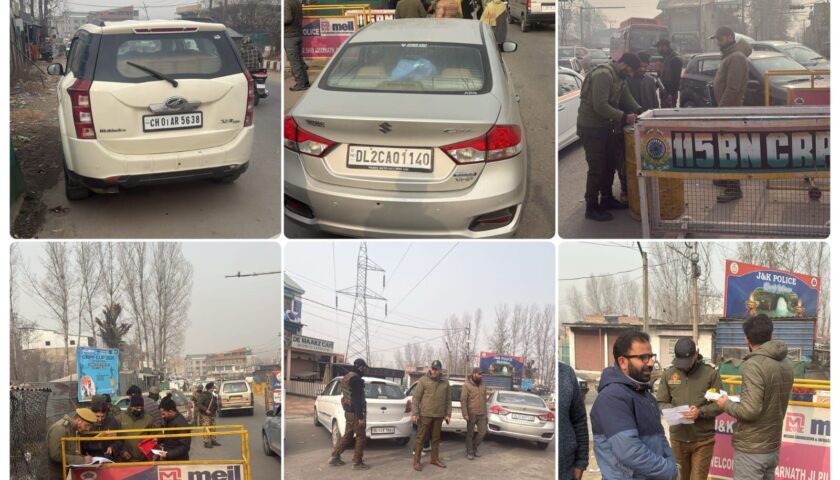The repeal of the special status of Jammu and Kashmir and its conversion into two union territories in August 2019 was accompanied by an unprecedented security lockdown that disempowered the population. Even as the goal of legally and politically integrating the region with the rest of India was achieved, the hard security measures have alienated the population of the erstwhile state.
Among the harsh measures imposed by the government since 5 August 2019 is a near complete internet shutdown, which has affected all in Jammu & Kashmir. Initially, a complete shutdown was imposed for just over five months, following which archaic 2G services were restored[3]. Nearly a year on, these restrictions continue—mobile data speeds remain throttled at the 2G level with a 384 Kbps upper limit. The decision to curb the internet was primarily driven by security concerns as the government considers social media and other online platforms the primary drivers of militancy.
In a bid to end violence, militancy and online extremism in the region, the Indian government imposed restrictions on the internet—currently, the longest-ever in any democratic country—despite the objections from human rights organisations, civil society, political parties and even retired security officials. The restriction, which the government has said are meant to “curb misuse of data for uploading, downloading, circulation of provocative content on the social media and prevent or reduce rumour-mongering and fake news, counter attempts of recruiting gullible youth into the militants’ ranks,” will likely continue for a few more months. But importantly, they have not curbed violence or militancy. At least 203 fatalities have been reported from militant activities between 1 January and 22 July 2020, including 17 civilians, 34 security personnel and 152 militants. The region also saw 223 terror-related incidents over the same period.
There is also evidence to suggest that the internet shutdown has failed to fully “curb” the misuse of the internet by militant groups. Hundreds of WhatsApp groups run by militant outfits, such as the Hizbul Mujahideen, al-Qaeda in the Indian Subcontinent, the Resistance Front, and their supporters continue to operate, attracting a large fanbase among the local youth who have spent most of their time indoors owing to multiple lockdowns.
Militants have found ways of working around the low internet speed by ensuring the video and audio messages uploaded on these WhatsApp groups are of a small size. Only the upload, download or streaming of high-resolution videos has been disrupted by the restrictions; the exchange of low grade visual and text content, which glorifies violence and violent actors, remains unaffected.
Riyaz Naikoo, the operational commander of Hizbul Mujahideen and the most wanted militant in Kashmir, was killed in an encounter by security forces in May 2020. Immediately after the encounter, the internet and telecom services in the entire Valley were snapped. Once services were restored, the names of many WhatsApp groups meant for the distribution of militant propaganda were changed to ‘Shaheed Naikoo Media’ (Martyr Naikoo Media), sharing audios, videos and other content eulogising Naikoo. Similar campaigns by Hizbul Mujahideen and other outfits, have run throughout the year undeterred by the internet restrictions.
A new militancy outfit called ‘The Resistance Front’ made its appearance on Telegram in October last year after it claimed a grenade attack in Srinagar. The group rose to prominence in the first week of April when it claimed the killing of five members of Indian Army’s paratroopers in Kupwara sector of Kashmir valley . Immediately after this encounter, the TRF grabbed headlines and prime time debates in Indian media. Whereas analysts have pointed out that the group is a cover, new brand name under which various militant outfits operate, the media in declared it as the biggest threat. A classic example of how militant outfits weaponised the social media to claim a success against the security forces.
In the absence of a credible counter-narrative and counter-speech, militant propaganda of continues to hold traction. The jingoistic discourse witnessed online and on the mainstream media to counter militant narratives is proving counterproductive as it often tends to label the entire population by the same brush—jihadi, anti-national, terror sympathisers and the like. Often the jingoistic media outlets latch up the militant propaganda and end up amplifying it even more. Furthermore, the discourse of ultra-nationalism fails to address the root causes that lead to the radicalisation of the youth.
According to the security forces, there has been a 48 percent-decline in the recruitment of local youth into militant ranks this year. Traditional security actions (such as dismantling civilian networks that aid militancy, disrupting the financial and logistical channels, aggressive deployment of forces, and operations to kill or arrest the militants) coupled with the restrictions imposed since last year and the COVID-19-induced lockdown have led to a drop in recruitment. However, even an iron fist approach has not completely stopped militant recruitment. As of 30 June, 67 local Kashmiris are thought to have joined militant ranks.
Security forces claim 118 militants have been killed in the first six months of 2020 and the low recruitment as a success. But it is premature to declare a victory or even credit internet restrictions for such a momentary decline. Militancy in Kashmir has seen phases of rise and decline over the years, and peaked in pre-internet and pre-mobile telephony era as well.
The democratic political system of Jammu and Kashmir was impacted after several mainstream leaders who have contested elections in opposition to extremist groups, including former chief ministers and state and Union cabinet members, were detained without any charges. After discussing the matter only after it introduced the constitutional changes, the central government’s efforts to help establish new political parties in the region have done more harm than good. The ensuing “political vacuum” is a recipe for disaster. In the battle of extremes, the middle ground—centrist space for democratic political expression—has been completely dismantled.
The restrictions in Kashmir have also had an impact on businesses, jobs and the access to education. The internet curbs have also meant that students have been unable to turn to online learning. Such disruptions have led to increased anxiety among the youth regarding their future, which could push some towards religious indoctrination. While education is seen as a tool to counter the violent extremist ideologies around the world, in Kashmir, it has become collateral damage.
New Wave of Radicalisation?
The abrogation of Article 370 and the bifurcation of Jammu and Kashmir has come at the cost of socio-political groups seeking a resolution of the Kashmir conflict within the framework of the Indian Constitution or through negotiations. Yet, long before these decisions were announced, the ground had already shifted towards a radicalised path espoused by new-age militant icons Burhan Wani and Zakir Musa.
The methods of collective punishment, such as the internet shutdowns, have caused widespread alienation among the population in the Kashmir Valley, parts of Jammu and is open to exploitation by militant groups. In 1987, a political blunder—the rigging of assembly elections—triggered a militant movement in Kashmir, which has endured for three decades. The 5 August decision could prove to be a bigger factor than that.
In the absence of a credible polity that can channelise the anxieties and political aspirations of the youth, the militant Islamist groups appear more attractive for two reasons—first, the belief in some quarters that the 5 August decision was in fulfilment of the Hindutva movement’s ideological goals, amid the ongoing polarised discourse in the country; and second, the hard-line security-oriented approach is unbearable. For instance, a young man released a video clip on social media alleging that the daily harassment and torture by security officer had forced him to take up arms, a predicament faced by hundreds of young men and women in the region.
Ahead of the anniversary of the bifurcation Jammu and Kashmir and the repeal of its special status, the Hizbul Mujahideen released a 10-minute audio message on WhatsApp and Telegram thanking the Indian government for “undemocratic decisions” which are “illegal” and have awakened the “conscience and created a collective consensus ” among the people of Kashmir. These decisions, the message says, will help the people find a resolution to the Kashmir conflict, with “hundreds of highly educated youth” waiting to join militant groups even as recruitments have been put on hold for tactical reasons.
The current environment in Kashmir undoubtedly remains a fertile ground for further radicalisation and violence. It is only a matter of time before things start to unravel again.




